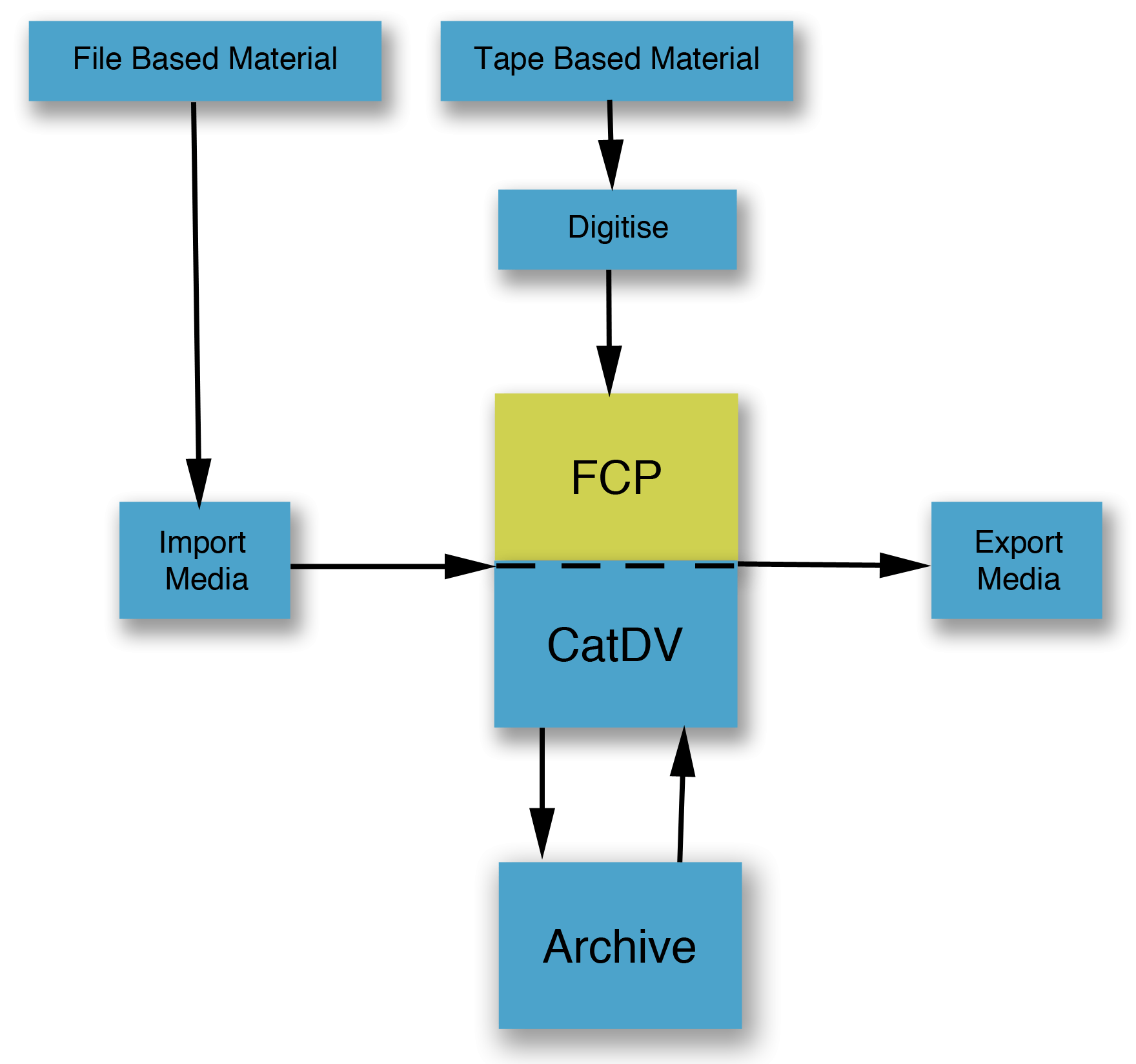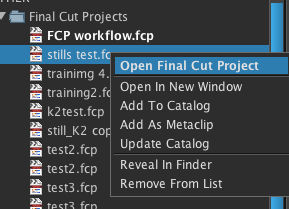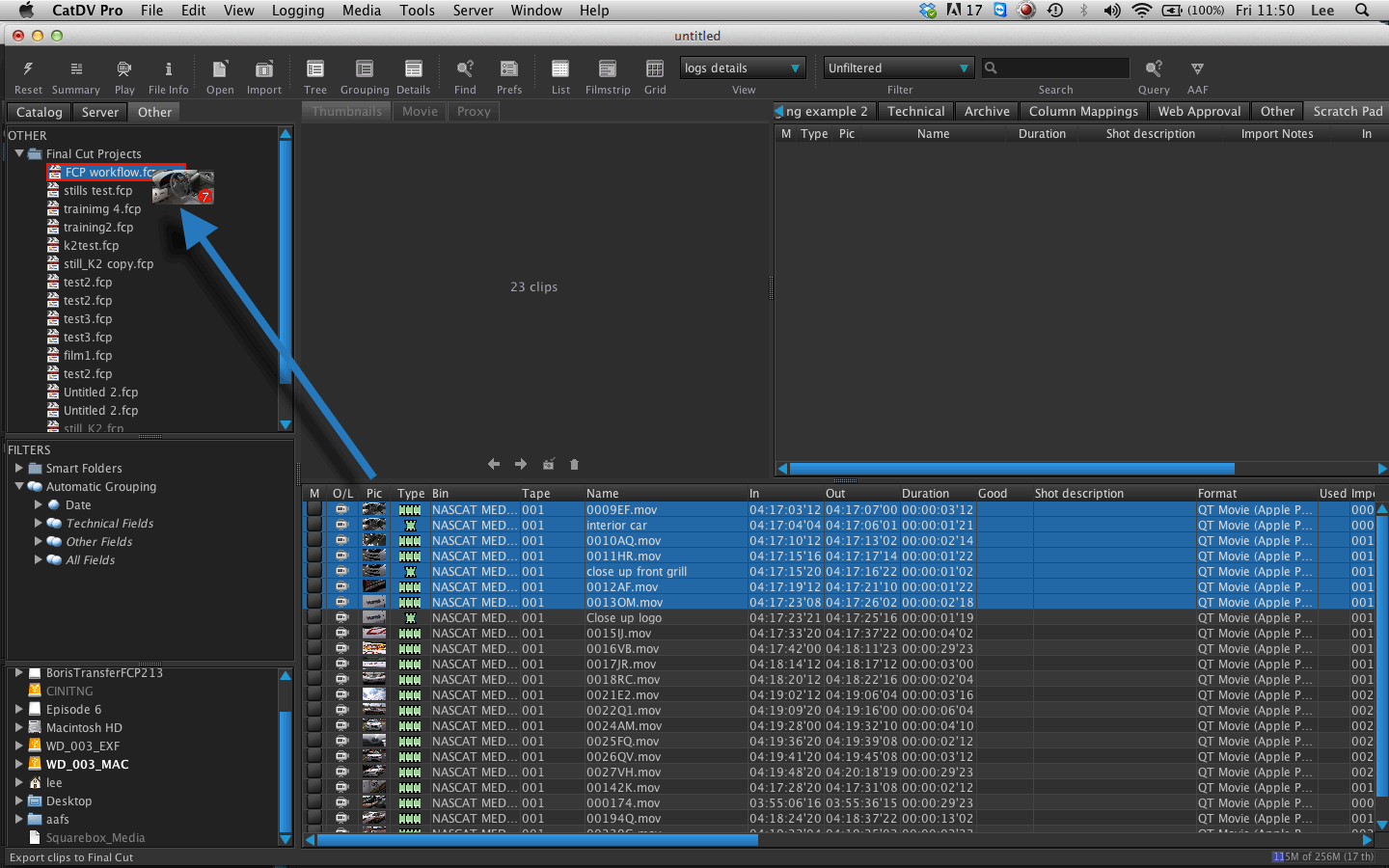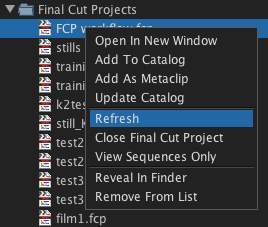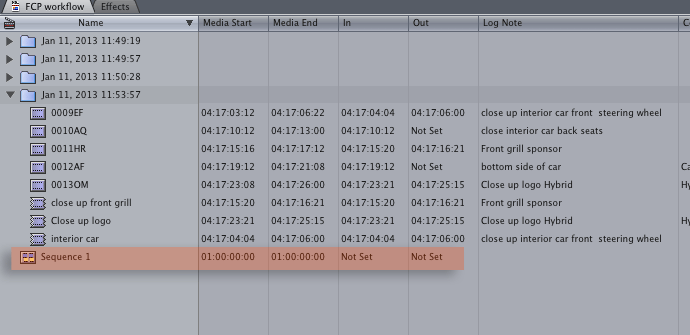CatDV works best when at the centre of your workflow. Below shows how CatDV can compliment your Final Cut Pro workflow. CatDV just sits on the back of FCP where you can send and receive clip and sequence updates.
File based media such as P2, XDCAM or Pro res can either be ingested into FCP or CatDV.
Using CatDV as a file ingest Tool for FCP
Drag your file based footage straight into CatDV by using the CatDV File Browser.
CatDV analyses the media to determine the format, if MXF files are detected then CatDV will automatically create MXF meta clips. All timecode and metadata from supported file types are imported into the catalog.
CatDV does not copy your media it just reads the files from their location, if your files live on a NAS, SAN or local storage connected to your Final Cut Pro systems then CatDV will keep track of the files location, which allows you to be fully flexible with how you store your media.
You can then use CatDV to review and log your material either using the original full res media or low res proxy files which CatDV can create or read existing proxy files. CatDV has unlimited user fields which can be customised to provide quick logging solutions such as radio buttons, drop boxes, linked hierarchy fields.
Subclips can be created and logged separately, markers can be added to both subclips and master clips. All this information can be sent to FCP in 2 ways
Xml Interchange
Export selected clips from CatDV to FCP using the Export to XML command. Import the xml file into FCP and the clips appear within a new bin complete with markers, subclips and logging metadata. Media is automatically linked.
Live FCP Refresh
Within CatDV you can see all your FCP projects ‘Live’. This is available by selecting the ‘Other Tab’ in the Tree Navigator, and selecting Final Cut Pro projects. This will display all the projects available. Projects in Bold are ‘open’. You can select to open and close FCP projects from within CatDV.
Select the clips, subclips or sequences from CatDV and drag onto the relevant open project. This will automatically create a new bin within FCP containing the selected clips.
Keep the CatDV catalog in sync with FCP
Within CatDV if you right click on the FCP project you can update the catalog to reflect the changes made within FCP.
For example if the editor is working on a sequence within FCP, updating the CatDV catalog in this way will display the sequence and the latest version of the clip, all media is linked which means you can use CatDV to log metadata for the sequence and export a viewing copy from CatDV. If the editor has added new notes these will be reflected in the CatDV catalog.
Additional metadata can be added to clips and sequences away from the main edit suite allowing producers to add and review clips and edits prior to the next edit session.
Exporting media from CatDV
Sequence, subclips and master clips generated in FCP can be exported as media files from CatDV. This creates a more flexible workflow as edit stations can continue to edit while transcoding tasks can be performed by CatDV.
Archiving with CatDV
Clips and sequences stored within CatDV can be archived using 3rd party Archiving solutions such as Cache –A, Quantum, Xendata. The optional archiving module within CatDV can archive the original media while keeping the proxy files available for future reference. CatDV will report the archive status and tape location of the media files. There is also the option to backup the metadata associated with each clip as part of the clip archive.

